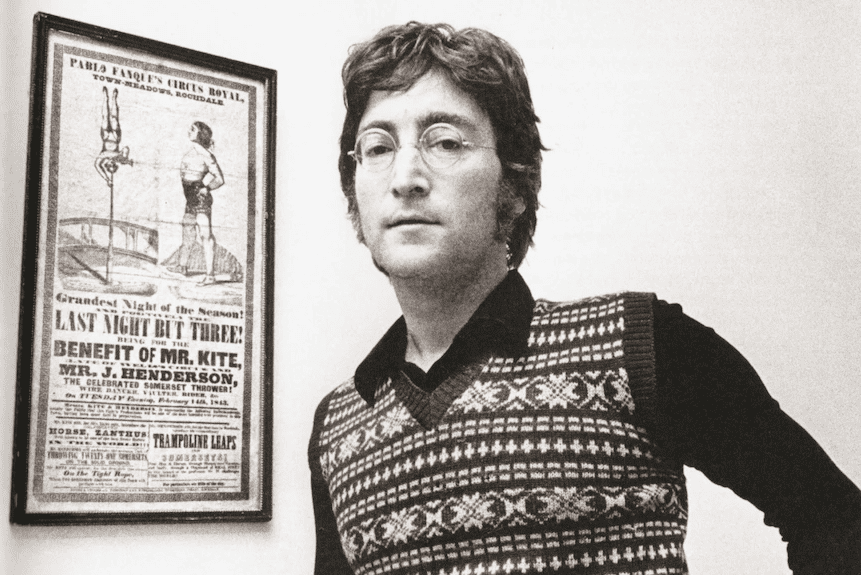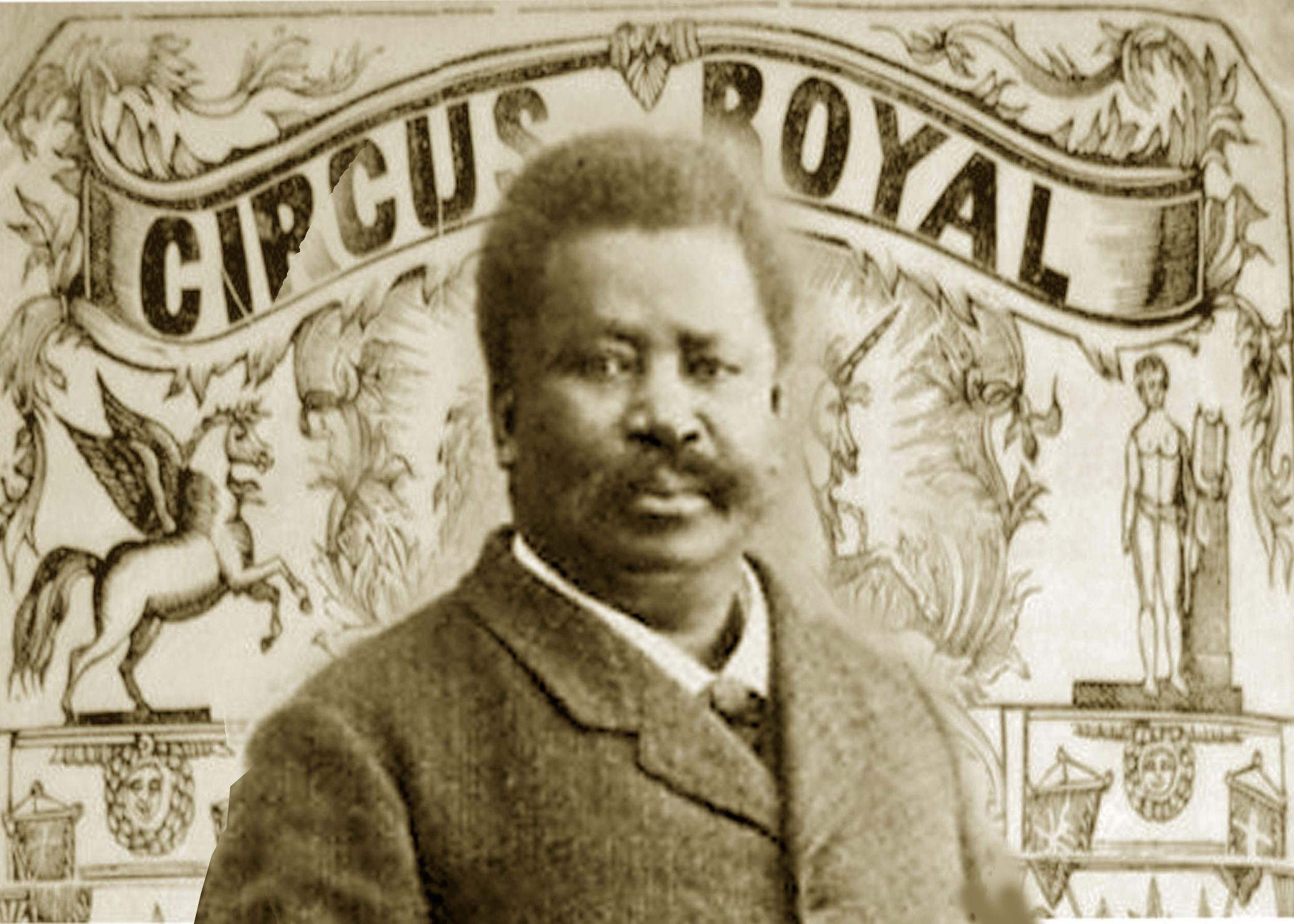Generation Hispanic TV - Live
Pablo Fanque: First Black, British Circus Owner Who You Don’t Know, But Absolutely Should
Pablo Fanque: First Black, British Circus Owner Who You Don’t Know, But Absolutely Should
[simple-author-box]

Pablo Fanque in front of a poster for his event.
An icon of Black British history who is lesser known but whose story should not go untold.
On the edge of Leeds University campus, wedged between a block of student flats and the fine art faculty building, lies the understated headstone of Susannah Darby, so seamlessly placed between a sprinkling of other graves that most people would walk straight past it. Below her name, she is remembered as the wife of William Darby – again, a name which, at first glance, seems completely ordinary. It is only upon reading further down that the headstone is revealed to be a precious part of Black history, as the life of William Darby, aka Pablo Fanque, is etched out in all its glory onto the grey stone of the couple’s now-shared grave.
The early life of renowned circus owner Pablo Fanque is nothing short of a mystery. Whilst most accounts report that the young performer was born in Norwich in 1810 to a mother, Mary, and an African-born father, John, who worked as a butler, other accounts have speculated that Darby may have been orphaned at a young age, born in a workhouse, or even that the birth year of 1810 is 14 years too late to be true.
Regardless, by the age of 11, the young entertainer was certainly no longer an unknown figure. Apprentice to circus owner William Batty, ‘Young Darby’ made his circus debut performing equestrian stunts and rope walking. He proved to be an instant hit, immediately receiving a round of rave reviews which continued well on into the rest of his career. Darby worked hard to perfect his skills and quickly rose to the top of the British Circus ranks.
‘Mr. Pablo Fanque is an artiste of colour, and his steed… we have not only never seen surpassed, but never equalled … Mr. Pablo Fanque was the hit of the evening.’ – The Illustrated London News, 1847

A poster for Benefit of Mr. Kite.
By the time he hit 30, Fanque’s skillset had vastly expanded. He became proficient in ‘rope-dancing, posturing, tumbling’ (The Illustrated London News), but most famously of all retained his position as the most skilled circus equestrian not only in the country, but some have suggested in the continent.
Finally, in 1841, after years of hopping between different companies, Fanque made the decision to take an even more active role in the production of circus shows. He assembled an impressive team, rented out theatres across the country, and founded his own company: Pablo Fanque’s Circus Royal, the first circus in Britain to be owned and managed by a person of colour.
Travelling up and down the country, Fanque’s company performed for all manner of audiences, from members of the lower class to the Queen and the Royal Family themselves. However, the region which really stole Fanque’s heart, and in which Fanque’s circus became a regular, famous fixture, was the North. Whilst he visited almost every major city in the UK, cities in Yorkshire and Lancashire such as Leeds, Sheffield, and Manchester, had the privilege of being the locations in which Fanque’s show could most often be seen playing.
‘For the benefit of Mr. Kite
There will be a show tonight on trampoline
The Hendersons will all be there
Late of Pablo Fanque’s Fair—what a scene
Over men and horses, hoops and garters
Lastly through a hogshead of real fire!
In this way Mr. K. will challenge the world!’
– The Beatles, ‘Being for the Benefit of Mr. Kite,’ from Sergeant Pepper’s Lonely Hearts Club Band
Through his great achievements, unparalleled level of talent, and reputation as a kind-hearted man who treated his circus performers exceptionally well, Pablo Fanque rightfully became a fixture in British circus.
Since dying of bronchitis in 1871, his legacy has been immortalized by his children, who followed in his footsteps as successful circus performers, his amphitheaters, which remained standing for many years after his death, and through his role as inspiration for the famous (if strange) Beatles’ hit ‘Being for the Benefit of Mr Kite’. However, most importantly of all, his legacy is kept alive through the impact he made as a Black man in the British arts scene. For example, speaking in 1905, many years after Fanque’s death, the Revered Thomas Horne, Chaplain of the Showmen’s Guild, stated, “In the great brotherhood of the equestrian world, there is no colour-line.” Although slavery had not yet been abolished, and racism was rife in much of British society, all research seems to suggest that, within the world of circus at least, Fanque was wholly accepted, and completely admired.

John Lennon pictured next to the poster that inspired the Beatles song, Being for the Benefit of Mr Kite.
Now, Fanque lies to rest in St George’s Fields alongside his wife, Susannah, and much like many other successful Black artists, he seems to have been somewhat written out of history. Only one researcher, Dr John M Turner, has ever really delved deep into the mystery of Fanque’s personal life, and little evidence remains clearly sketching out the intricacies of his career.
Even though many books, films, and plays have been produced since his death depicting successful circus performers as marginalized and underrepresented characters, the arts world seems to have replaced Black figures such as Pablo Fanque with Hugh Jackman-like Barnum’s and Zac Effron-esque Bailey’s (all of whom, needless to say, are white). Therefore, in order to combat a white-washed version of British history, it’s important that we rediscover the narratives of influential Black people, and make sure that their impact is never excluded from the History books again – and the life of Pablo Fanque, it seems, is a great place to start.
If you enjoyed this piece then check out the Black History Tube Map created by TfL and the Black Cultural Archives.
Acknowledgements: all information on Pablo Fanque is mostly from Dr John. M. Turner, ‘Pablo Fanque, Black Circus Proprietor’ in G. H. Gerzina (ed) Black Victorians – Black Victoriana, 2003.



